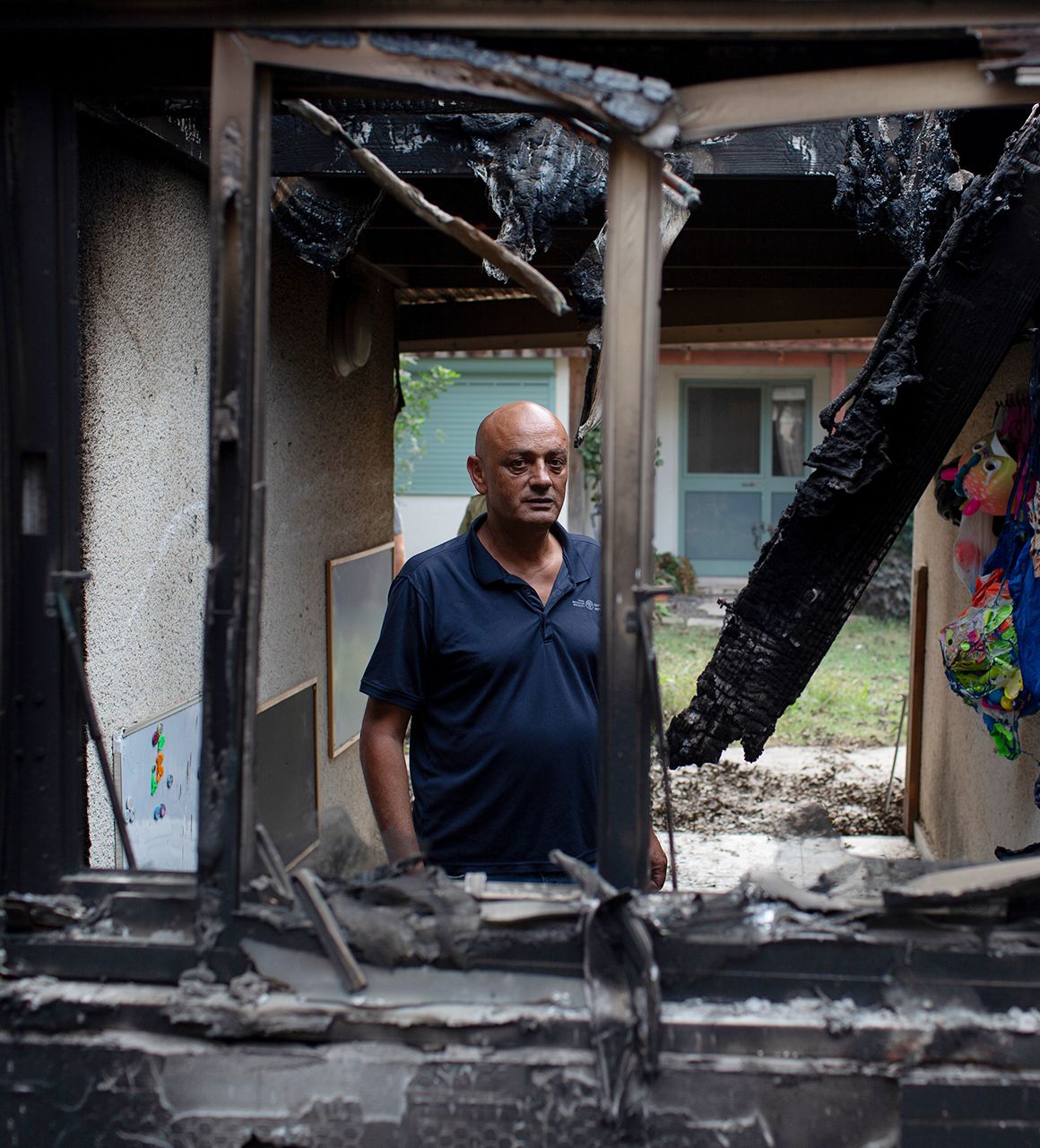By Wendell Steavenson
Two weeks after the Hamas invasion of Israel, Moshe Ajami, deputy director of the Israel Antiquities Authority, received a call from the Israel Defence Forces (IDF) asking for help. Ajami has built a career meticulously unearthing layers of biblical archaeology. Now his expertise in identifying charred and disintegrated remains was required to find bodies in the burnt-out houses on the kibbutzim which Hamas overran on October 7th.
Ajami assembled a dozen or so archaeologists and got straight to work. They joined a number of teams from across society: engineers, sappers and rescue-and-recovery units from the army, police investigators, municipal authorities, military and civilian rabbinates, and volunteers from Zaka, an organisation that helps the emergency services after terrorist attacks and ensures those killed receive a religious burial.
In the garden of a wrecked house on Be’eri, a kibbutz where more than 100 people were killed, a group of Ajami’s archaeologists, wearing blue surgical gloves, stooped over a sieve as they separated bones from ash. “Ash is gentle,” Ajami told me. “You can see the bones in it – like at an excavation. That’s the easy bit. It’s when we help in the unburnt houses that it is hard.”
Ajami is colour blind and used to perceiving the world “differently”, he told me. Perhaps, he posited, this was how he is able to spot the outlines of bones amid the heaps of burnt material that other recovery teams passed over. He said he could discern gradations of colour in the ash. Ajami’s training as an archaeologist meant he knew how to tell the difference in texture of small pieces of burnt bone – “like a sponge with many small holes” – and cinder. Sometimes he and his team have to wear masks to protect them from the powdered asbestos used as insulation in older roofs. This is, he believes, the first time that archaeologists have been deployed to excavate human remains after a massacre. “And I hope”, he said, “it’s the last.”
I met Ajami in a café on the road between Be’eri and his home in central Israel. It was past seven in the evening. He had been working every daylight hour for over a week and was exhausted. He was wearing a sweaty T-shirt and grubby jeans, and had a cut above one eye where something had fallen on him in one of the ruined houses. He told me he had seen terrible things, including two scalps from the heads of women and pools of blood in children’s bedrooms. Almost harder to bear were the remnants of ordinary life interrupted – like jahnun, a Yemeni pastry that people like to eat on Shabbat morning, burned in an oven. “It is shocking to see life and death together,” he said. “We are working like machines, like robots, we are not stopping,” he told me. “We don’t care anymore. There are missiles flying from here and there all day. We want to finish.” He paused and half-smiled, “And then there will be time to go to the psychologist.”
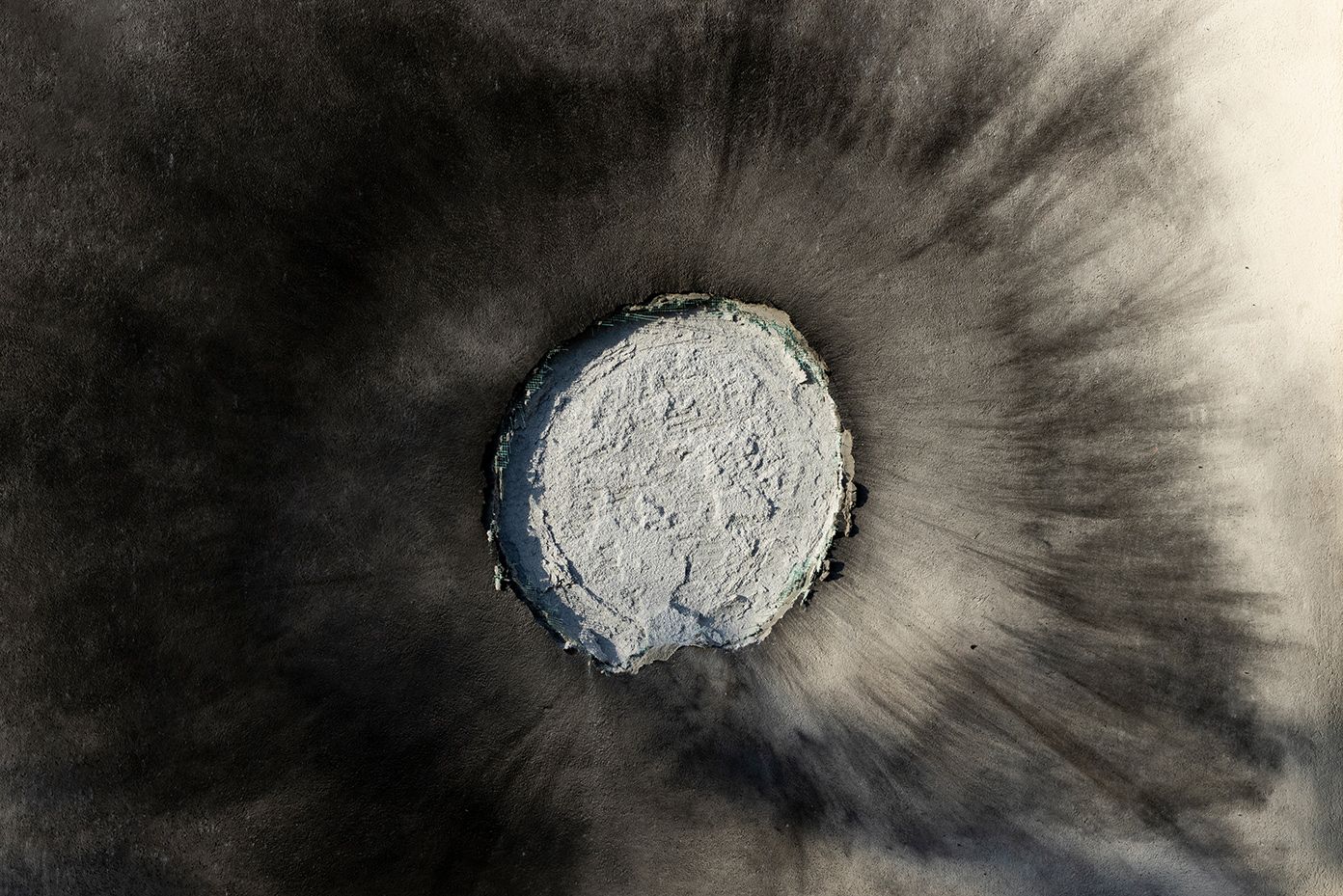
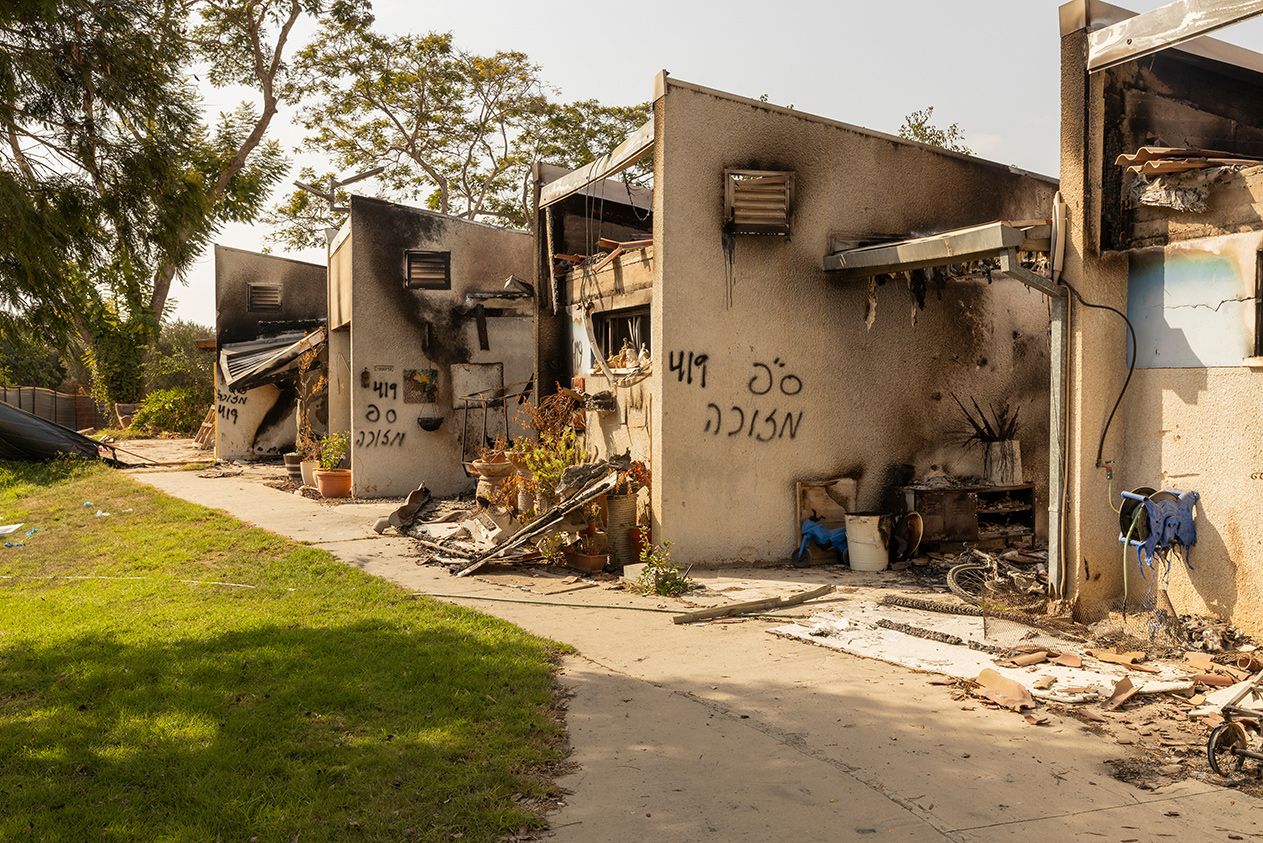
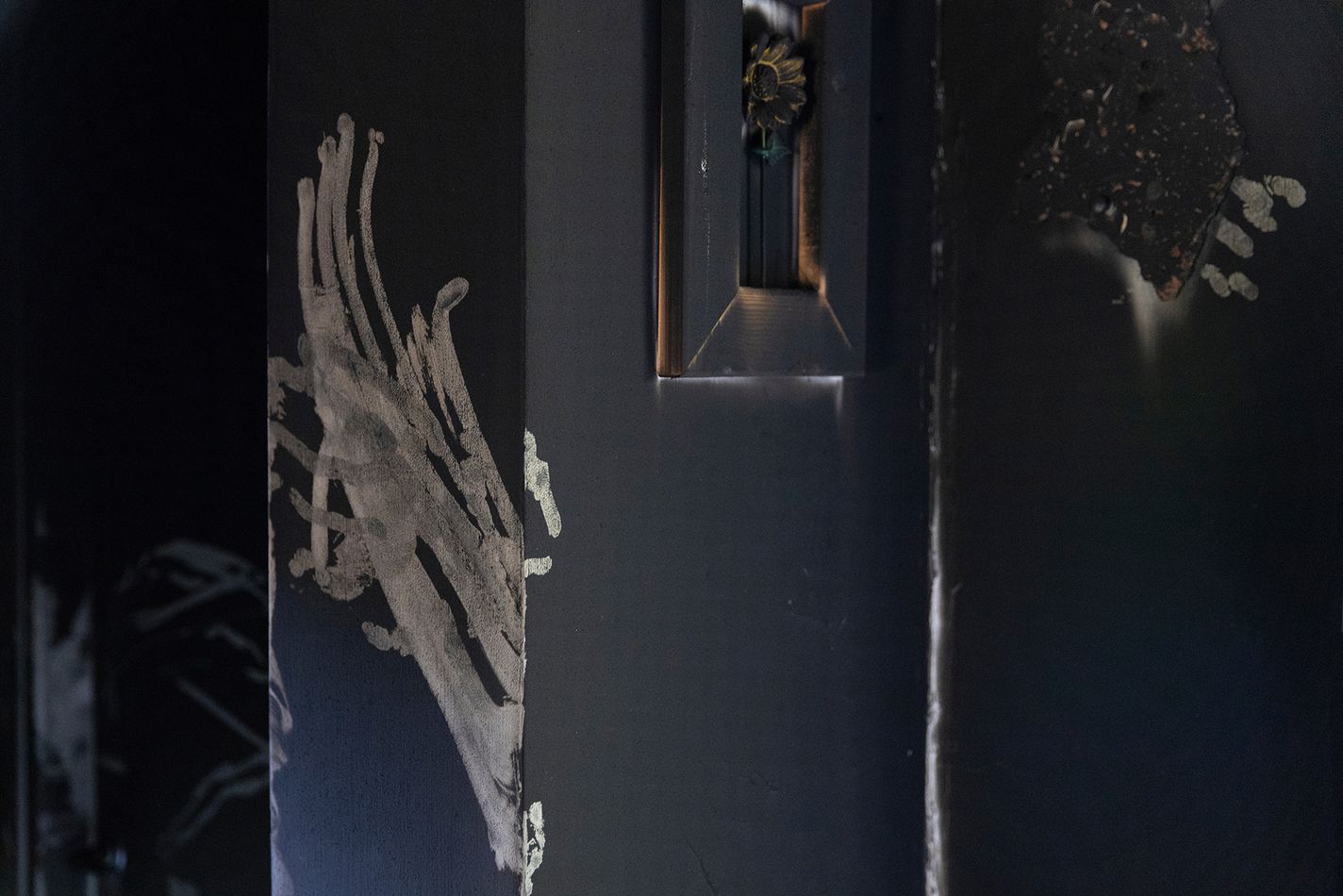
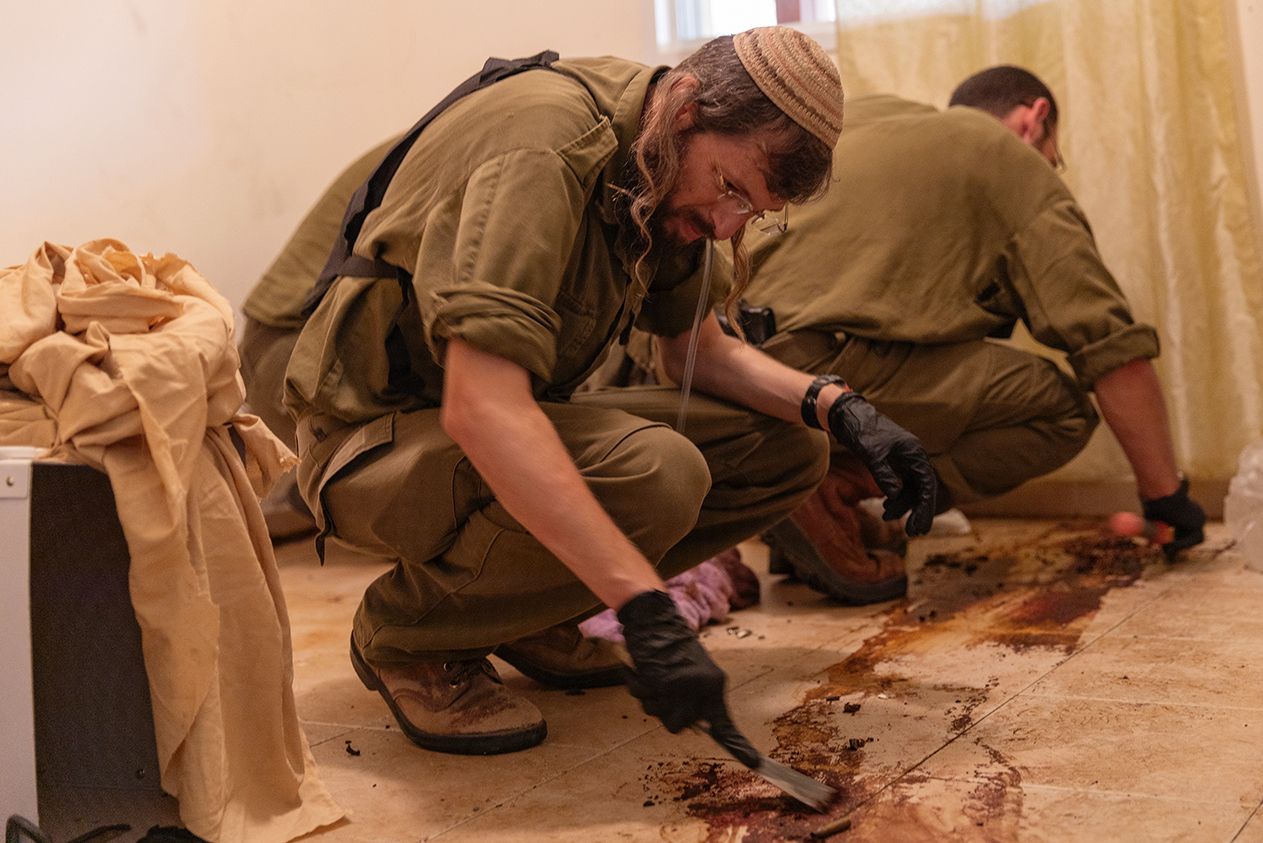
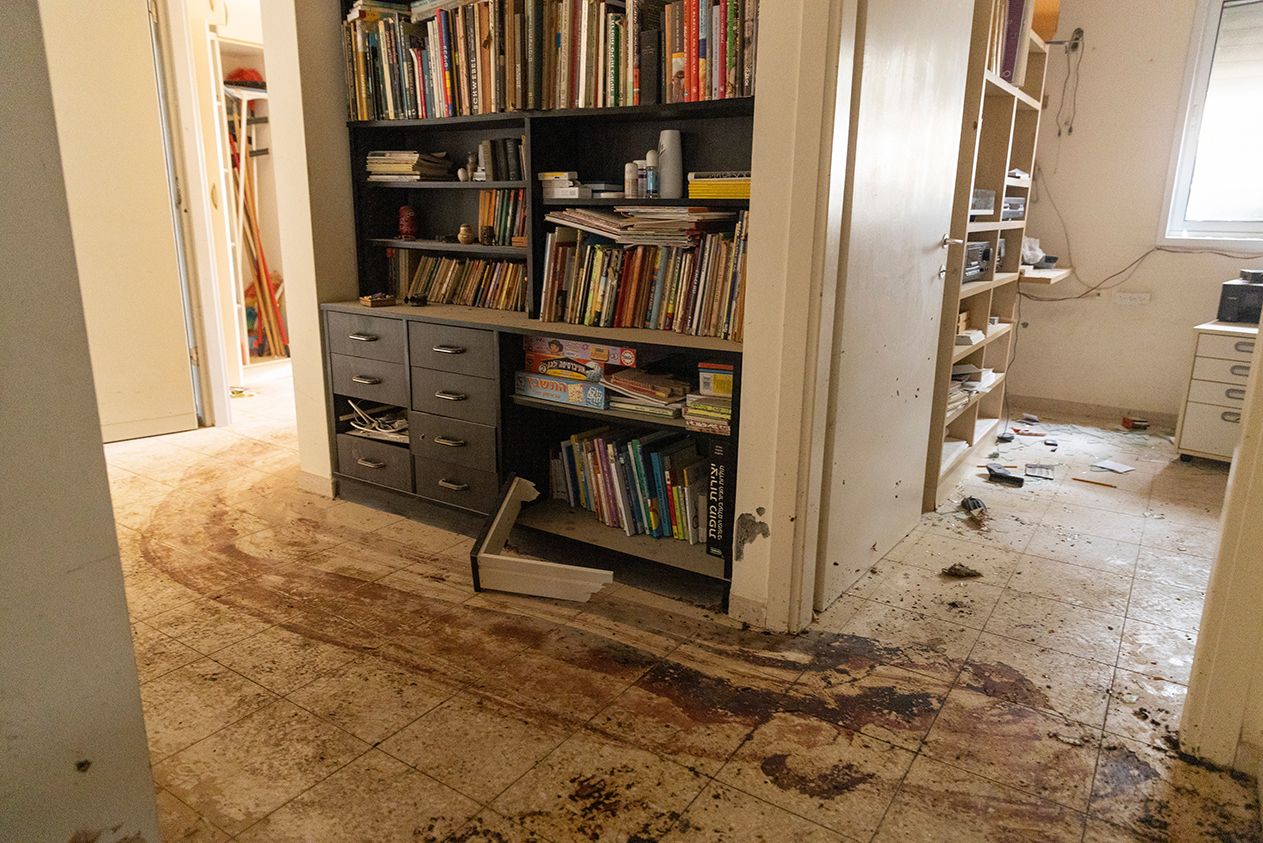
After Ajami started work, news soon spread that his team were discovering bones in the ash that had been missed by others. (Ajami told me he had now found 35 bodies so comprehensively burnt that others had overlooked them in the ash.) He scrolled down his phone to show me the dozens of messages from family members still searching for their loved ones.
A man called Eyal contacted him for help finding the body of his father-in-law, Meni Godard. Meni and his wife Ayelet, both in their 70s, were stalwarts of Be’eri. Meni had overseen the swimming pool for many years; Ayelet had recently organised a commemoration for the 50th anniversary of the Yom Kippur war. They had four children, all living in the kibbutz (they managed to survive the attacks). Around 10am on Saturday October 7th, Ayelet messaged a WhatsApp group saying that Meni had been shot and died in her arms, but that she had managed to escape. Her last communication said she was hiding in bushes nearby and could hear terrorists all around. Her body was later identified, but the family home had been burnt and no one could find Meni’s body. Eyal said he was sure it was inside. Ajami agreed to help. He met up with Eyal and one of Godard’s sons in Be’eri and told them to wait outside the house while he checked it out.
They are still finding bodies. Under houses, in attics, in bushes and groves, where people sought shelter from the gunmen. In the sandy no-man’s-land between the orchards of the kibbutzim and the Gaza border. Tangled in the ripped fence through which the Hamas fighters had poured. Even now, no one knows exactly how many were killed during the attacks. The official estimate stands at around 1,400. More than a hundred people are registered as missing, not including around 240 confirmed hostages. Officials say that hundreds of body parts are still awaiting identification.
At the end of October, they were still looking in Be’eri, where Hamas gunmen ran amok for more than six hours, blasting their way into homes to slaughter entire families. I joined a tour of the kibbutz organised by the IDF. It was led by Or Yelin, a resident of Be’eri, who showed us around with an M16 rifle slung across his back. He and his family had survived the attacks “by some miracle”, he said. Inside one wrecked house we saw a child’s room with a blood-soaked mattress and bullet holes in the plaster. There were finger marks in the soot on the walls. Outside, cat-food pellets lay in a bowl beside a back door. Shoes stood in neat rows on racks amid the scree of finely shattered glass.
“Here is the house where a 12-year-old girl had to put a tourniquet on her father’s leg after her mother and brother were killed,” said Yelin, walking along one of the pretty concrete paths planted with banks of lavender and rosemary. “Here is my cousin’s house. She protected her children like a lion after they killed her husband.”
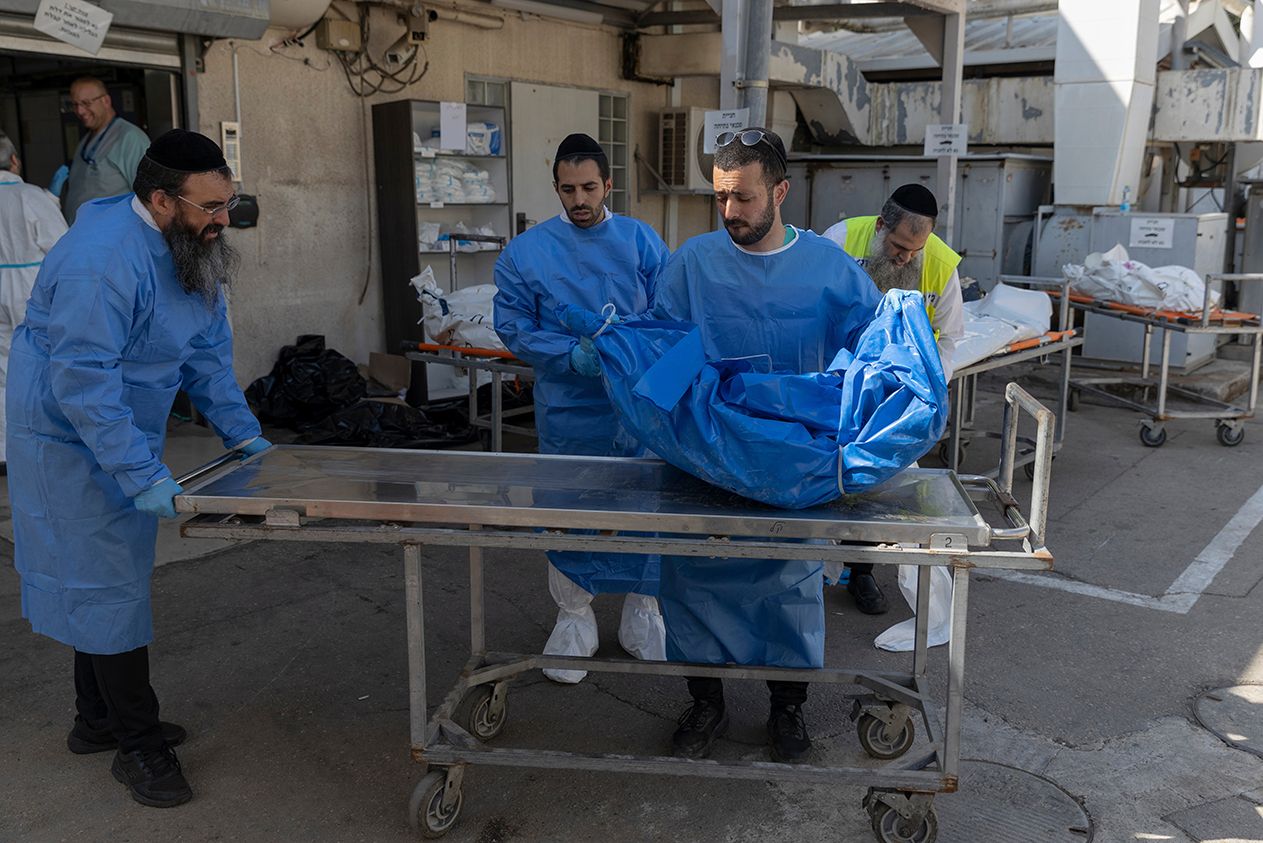
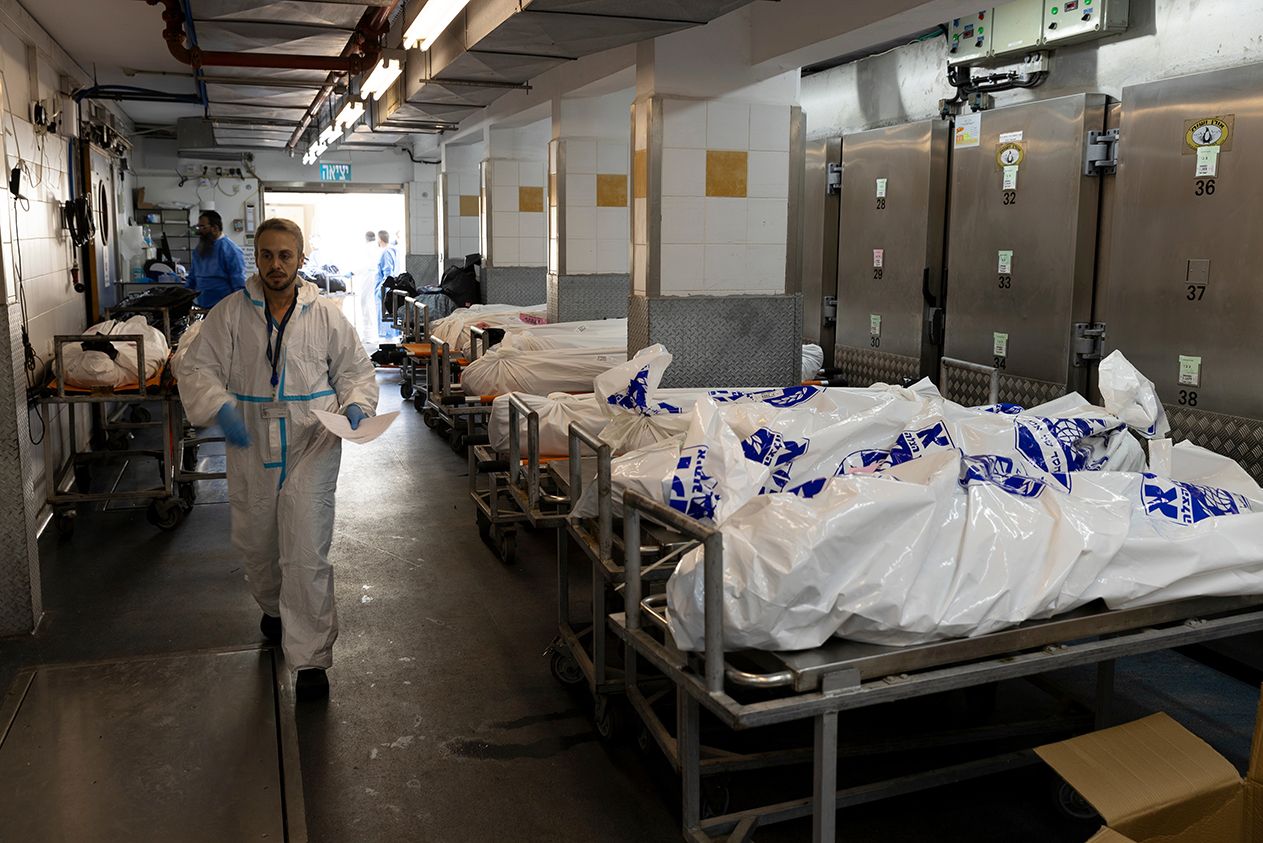
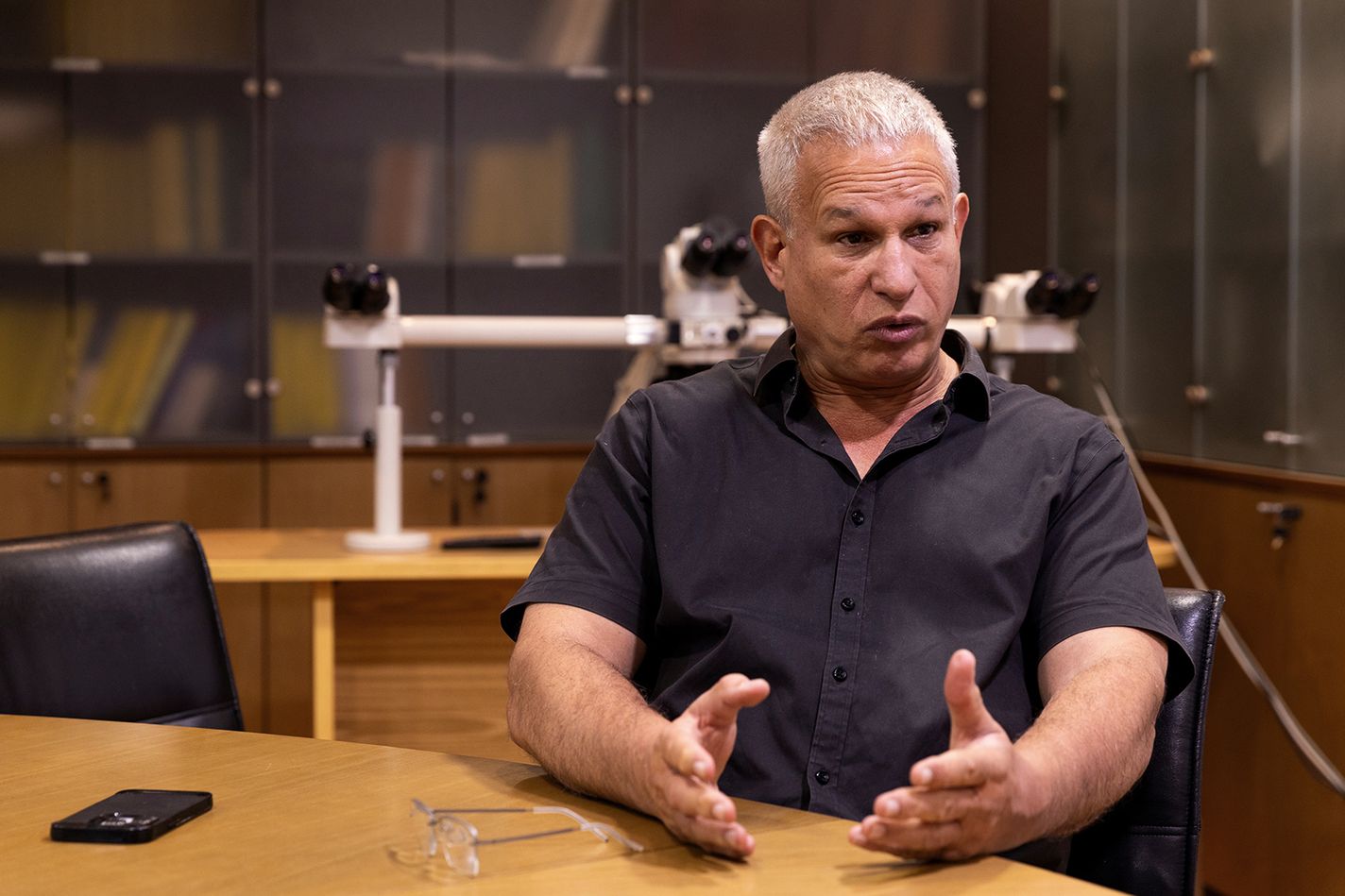
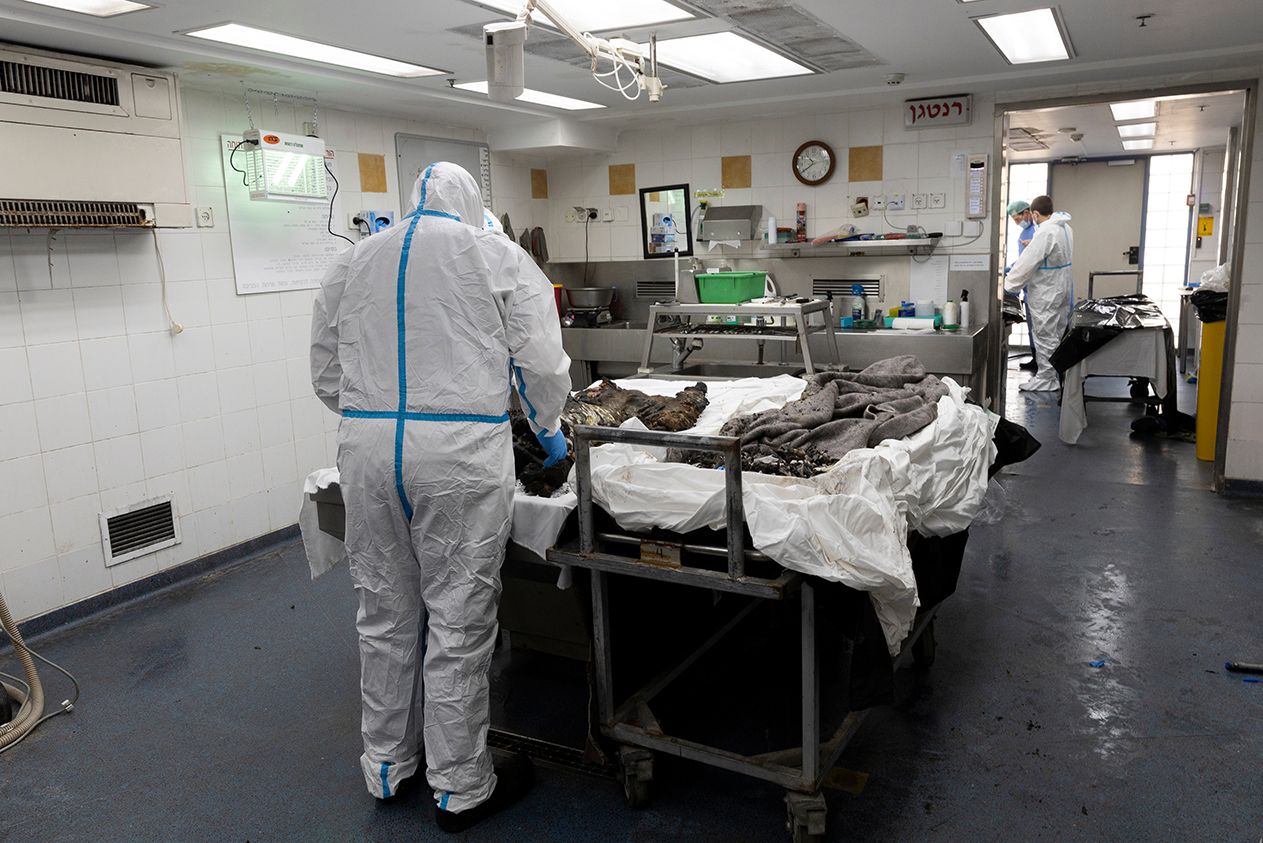
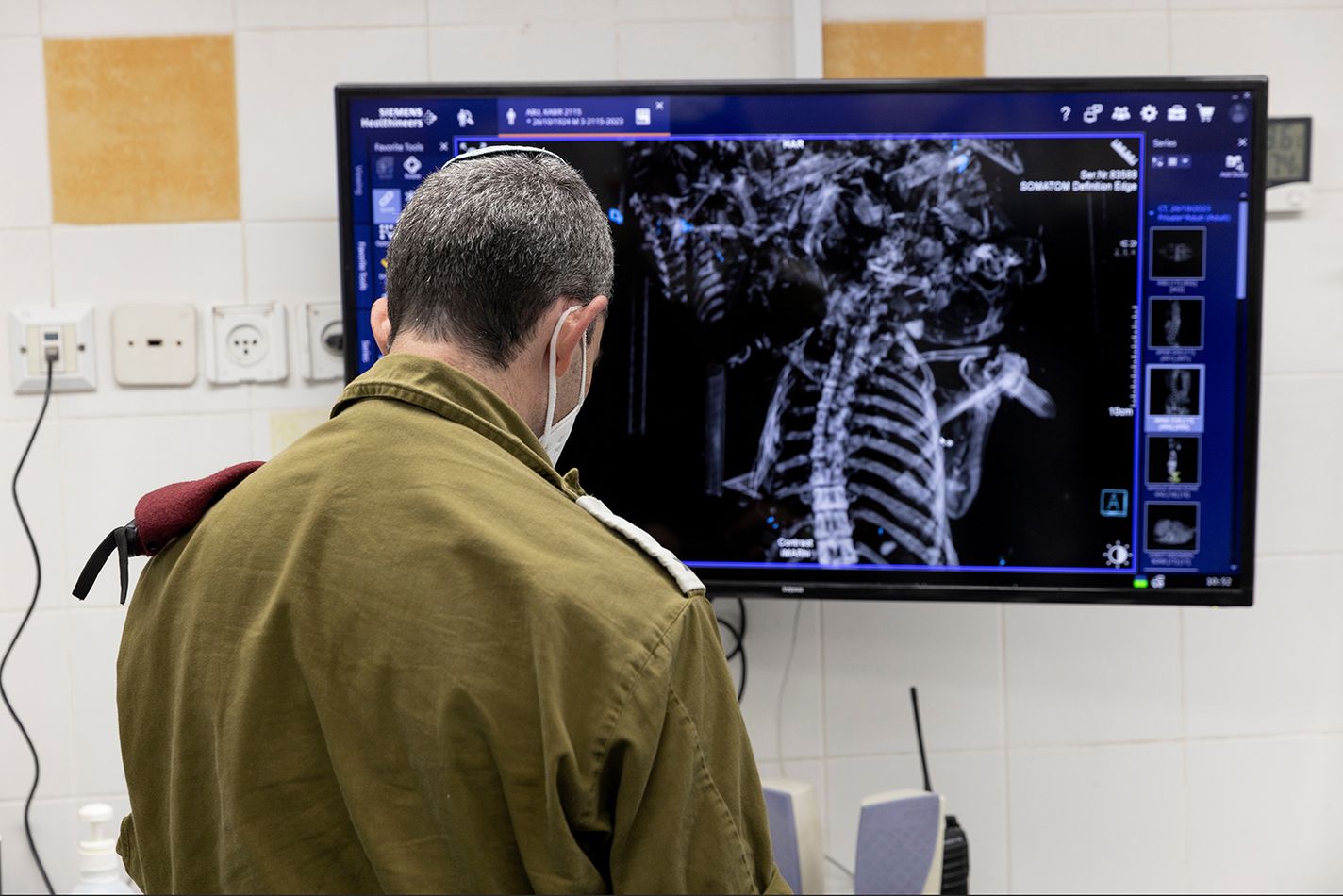
I wandered away from the centre of the kibbutz. Around the corner, two IDF reservists now stationed there – one an engineer, the other a history teacher – told us that a mother and child had been found burnt together.
No one could discern a pattern to the atrocities. “It’s quite random,” said the history teacher. “They did different things to different houses.” Artillery boomed against a deeper rumble of the bombing of Gaza. Above us a drone buzzed in the hot, blue interminable sky.
Early on a decision was made that all the bodies should be taken to the Shura IDF base outside Tel Aviv, which is also home to the military rabbinate. From the start of the forensic operation, there has been an awkward overlap of military and civilian authorities. Both soldiers and civilians had been killed. Bodies were brought in by a variety of teams, even by relatives who had sought out their loved ones.
One volunteer at Shura told me that on that first terrible day a truck with 80 bodies arrived, then straight afterwards one with 200, and then another. At Shura, military, police and civilian forensic scientists worked side by side. Volunteers from Zaka and a female unit with the IDF, dedicated to taking care of the bodies of women soldiers, unloaded body bags and opened them. Eventually, several hundred bodies that were too burnt or decomposed to identify easily were transferred to the Abu Kabir Forensic Institute, Israel’s only civilian forensic-pathology lab, for CT scans and DNA analysis.
The overwhelming number of casualties meant that the operation was disorganised from the start. Baruck Niddam, director of the international arm of the Zaka, told me that “the mess, the disorder, of this event is crazy.” Since then, the sheer number of departments and agencies recovering bodies, identifying them, and investigating and documenting crime scenes has only compounded the confusion.
“Usually when I go to a place [where people have been killed], I know the people there,” Niddam told me. “I work regularly with police investigators. But these days I don’t know everyone.” There are officials from local municipalities, from the military rabbinate and from several army units. “We are trying to organise it all, but it’s a mess. We never had to deal with an event on this scale and every organisation is doing its own thing.”
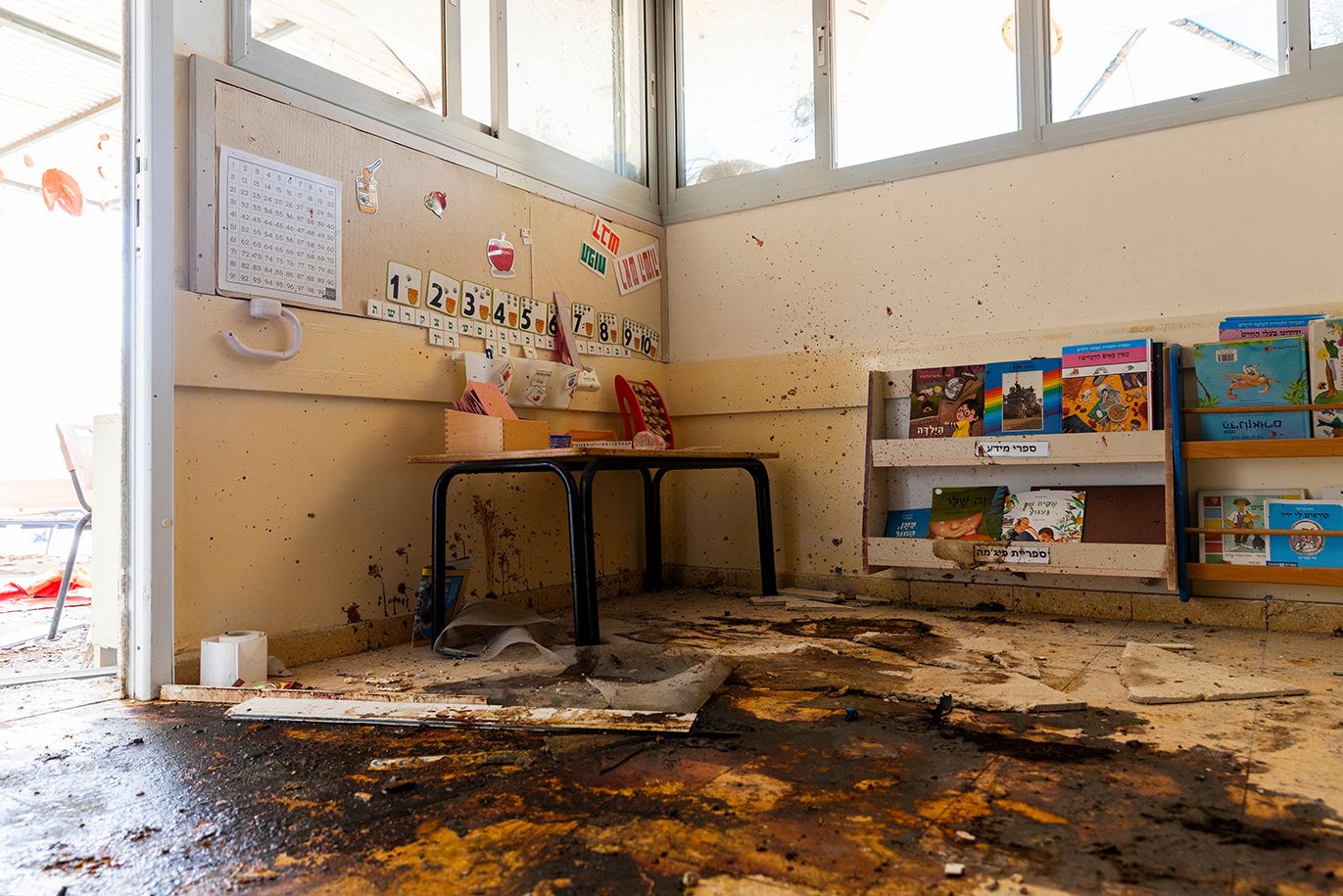
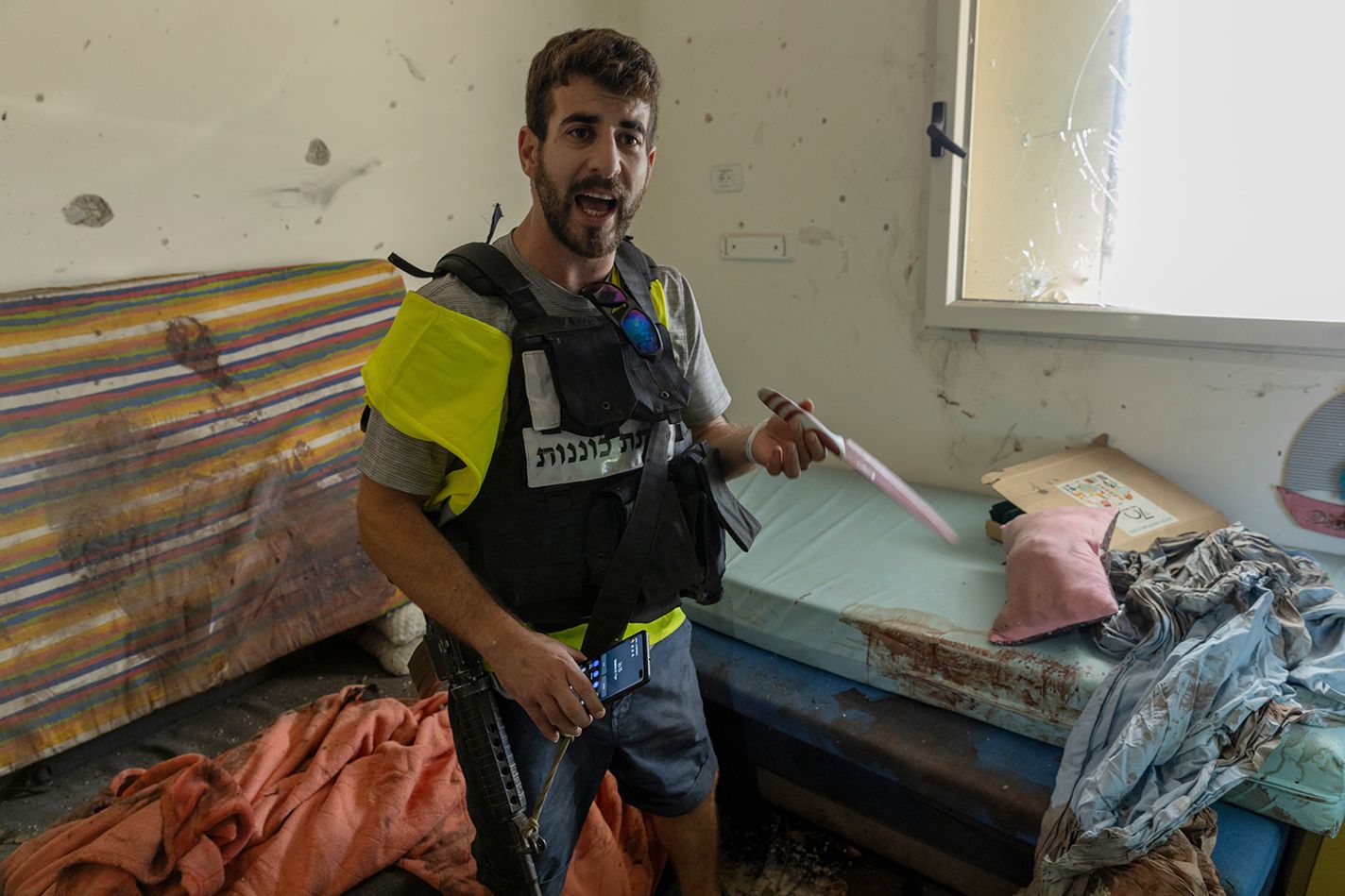
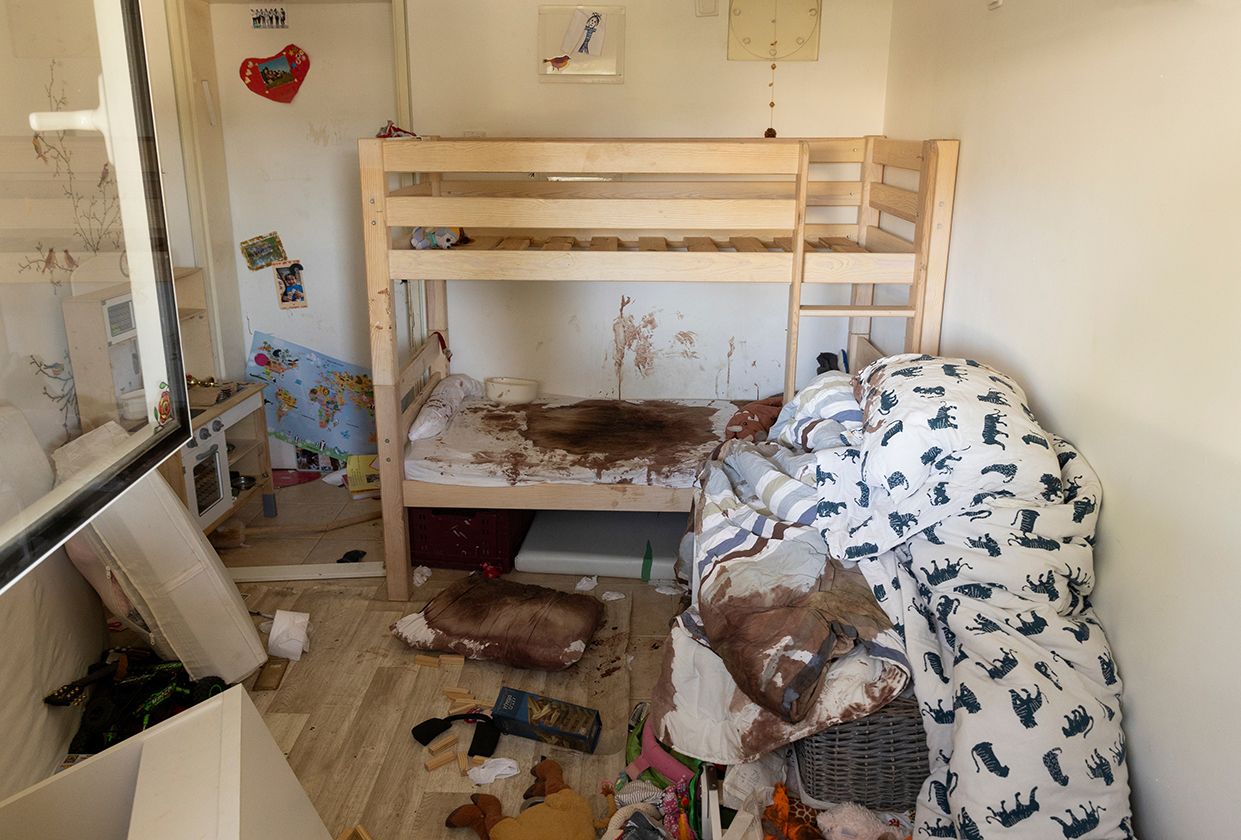
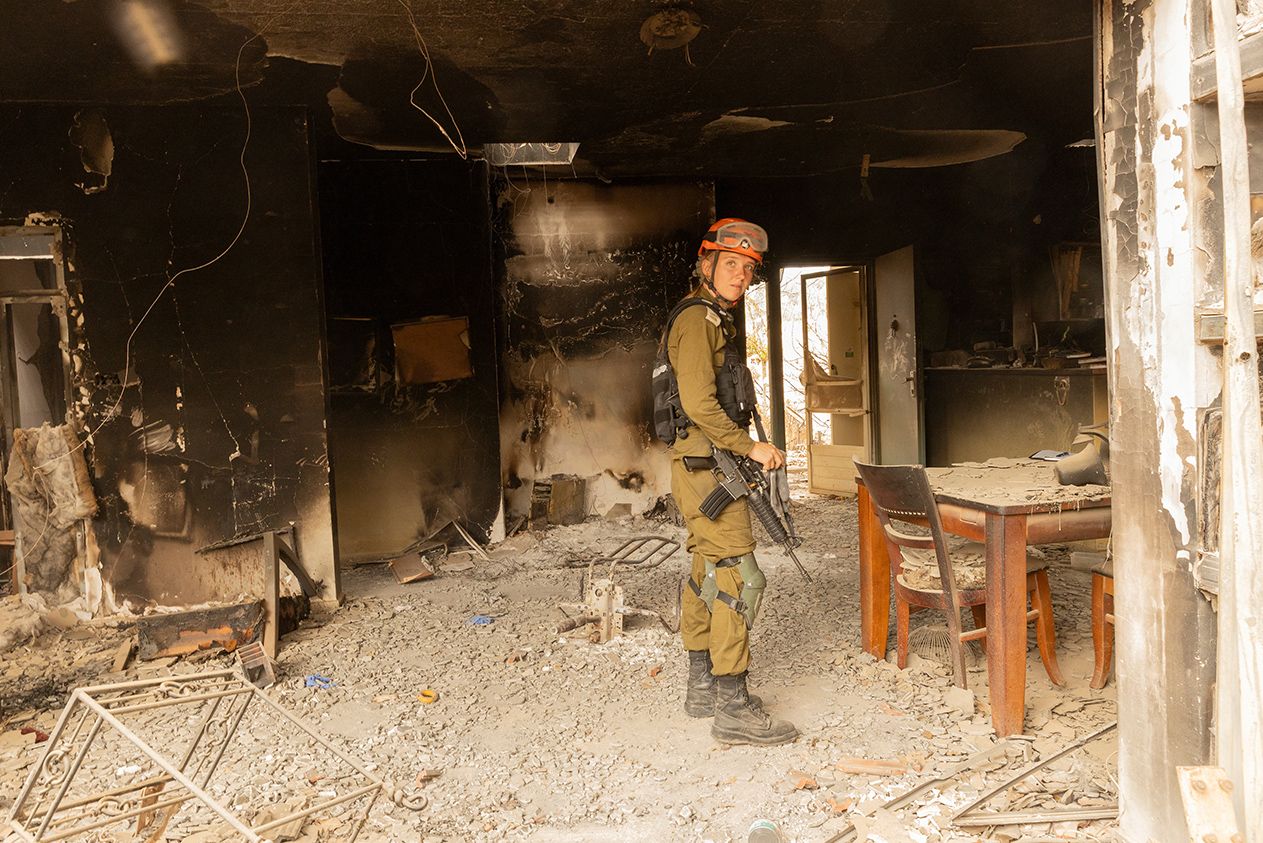
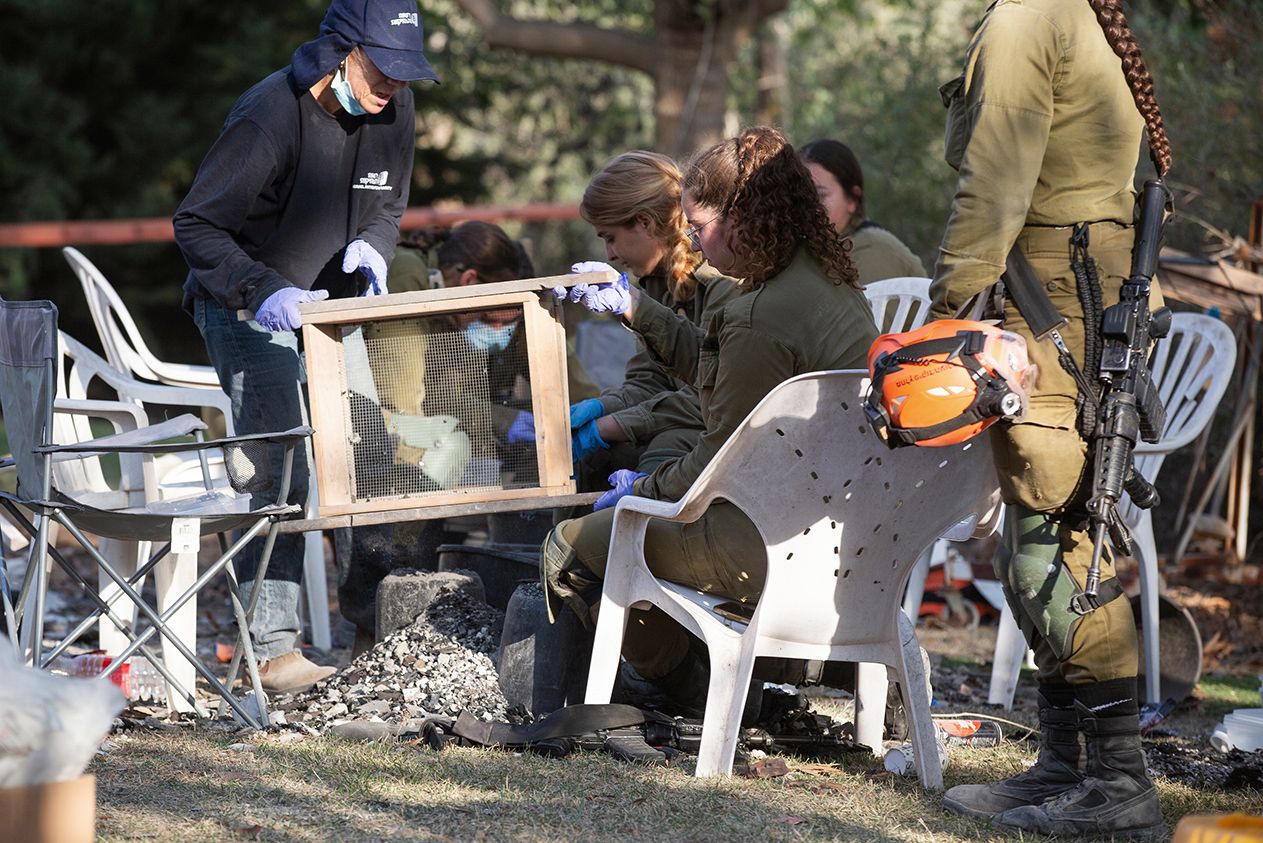
One senior medical official, who didn’t want to be identified, told me that part of the problem was that after the chaos of the first few days, mistakes had not been sufficiently corrected. “We don’t know, even now [three weeks after the attacks] how many people were killed. I don’t know how many bodies have been counted. I’m sorry for the mess here. I am sorry and ashamed.” The Israeli authorities, mindful that families of the missing were desperate for news, and of the religious imperative to bury bodies as soon as possible after death, seem to have prioritised identification over analysing the crimes committed.
To date, Israeli authorities have not issued a breakdown of casualty figures. We don’t know how many Israelis, Gazan and Thai workers, Bedouin Arabs and Hamas gunmen were killed or wounded; how many were soldiers or civilians; and what their age and sex were. Data about the nature of the injuries – whether people were tortured or raped, or their bodies multilated – are also not yet available. In some cases, the medical official told me, the opportunity to gather this information may have been lost. Photos of the bodies, he said, were initially taken with an eye to identification rather than evidence-gathering.
So far, the most shocking details to emerge have been anecdotal, reported to journalists by those working to recover and identify the bodies. This has led to gruesome debate over whether babies were beheaded and, if so, in what numbers. Workers in the morgue confirmed that they had seen babies whose heads were missing. Doctors and volunteers at Shura and Abu Kabir also spoke of women’s bodies with bloody underpants and broken pelvises; bodies booby-trapped with grenades; bodies burnt and fused together; bodies with tied hands and feet; bodies with contact gunshot wounds, where gunpowder is tattooed around the bullet hole, indicating the muzzle of the gun was pressed into the skin when the trigger was pulled.
Dr Chen Kugel, the head of the Abu Kabir Institute, told me he had seen the burnt, headless bodies of babies, although he could not say for certain whether they had been beheaded. Sometimes it is easier to tell. “Yesterday I saw a beheaded person, a young girl, perhaps eight or ten years old,” he told me. “The body was decomposed. They only found her recently. I think she died of a gunshot wound and was then beheaded.”
There is so much potential for confusion. Kugel told me the situation was very different from a plane crash, when you know how many people were on board. In this case the picture is blurred. The scientists don’t know whether the missing are hostages in Gaza or dead, their bodies not yet recovered or identified. In some instances, entire families were wiped out, so it is difficult to compile comparative information – medical and dental records, DNA profiles – to which remains can be matched. There were many foreign workers in the area, some of whom are unregistered. Kugel said that they have been unable to identify 50 agricultural labourers.
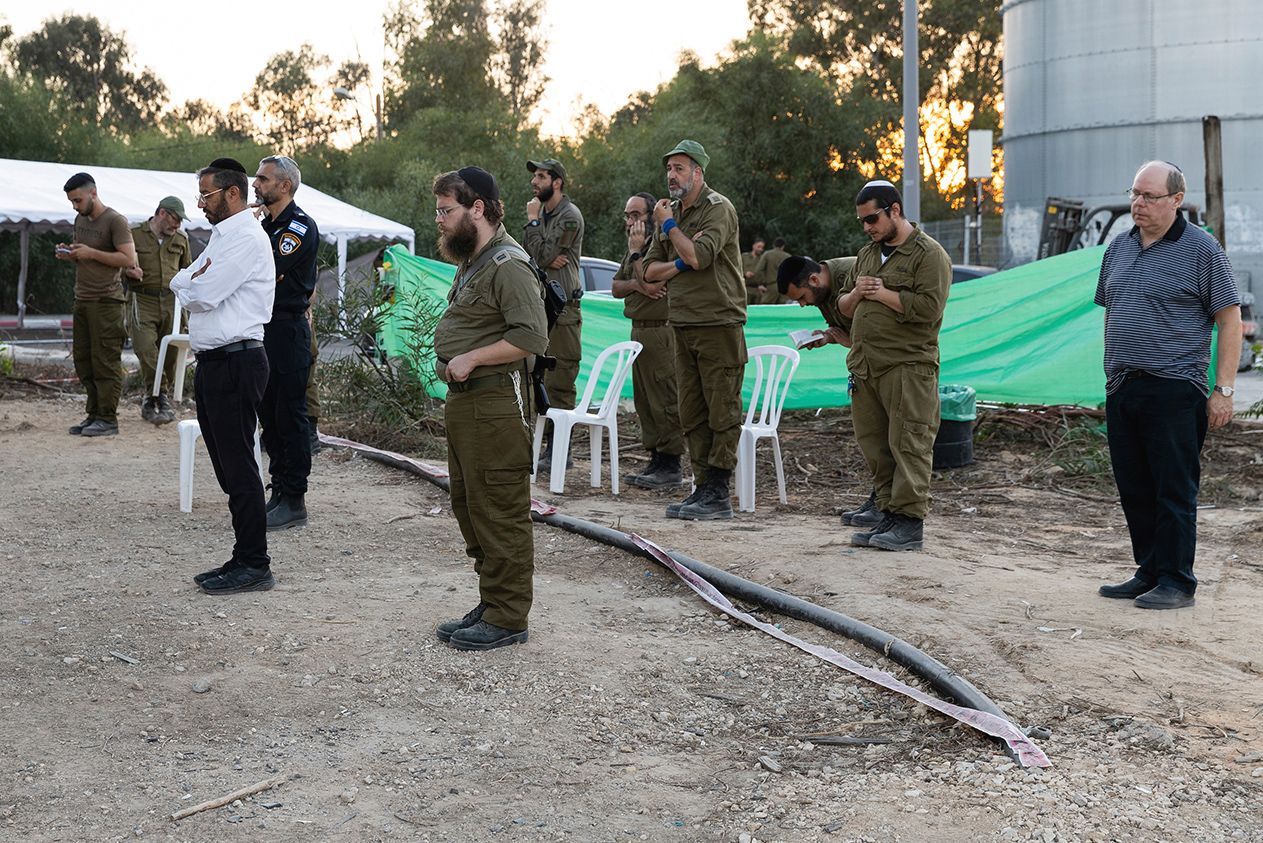
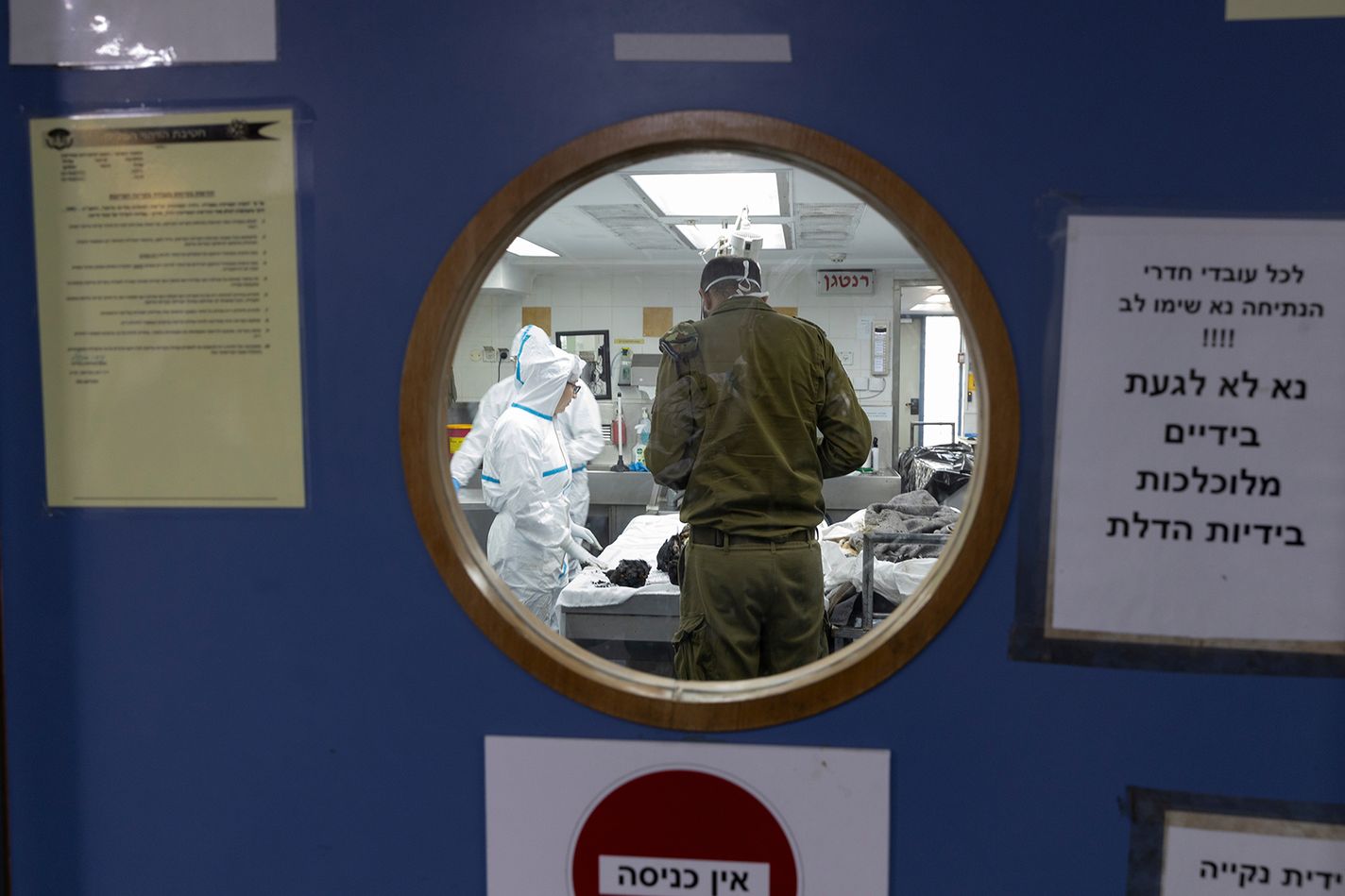
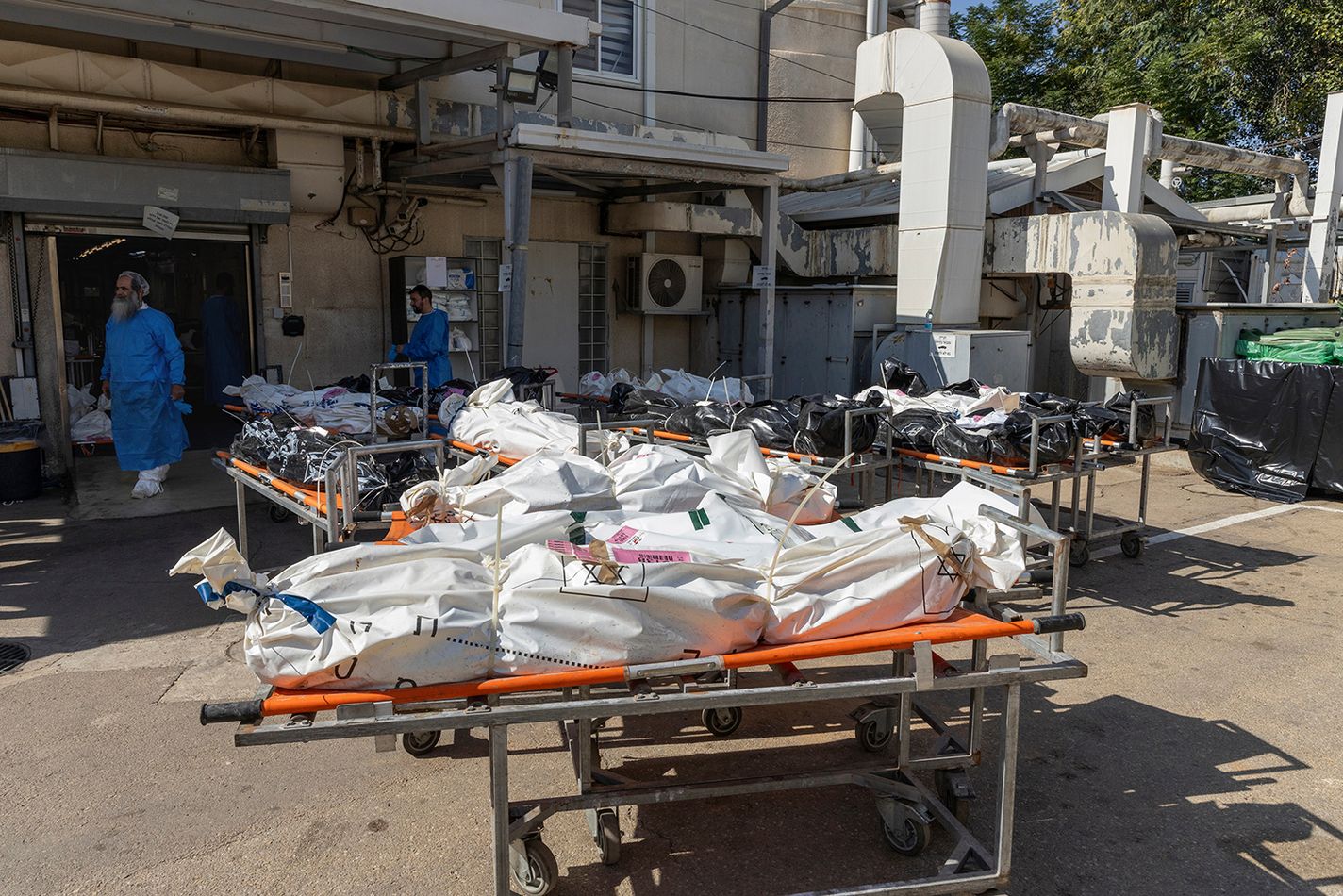
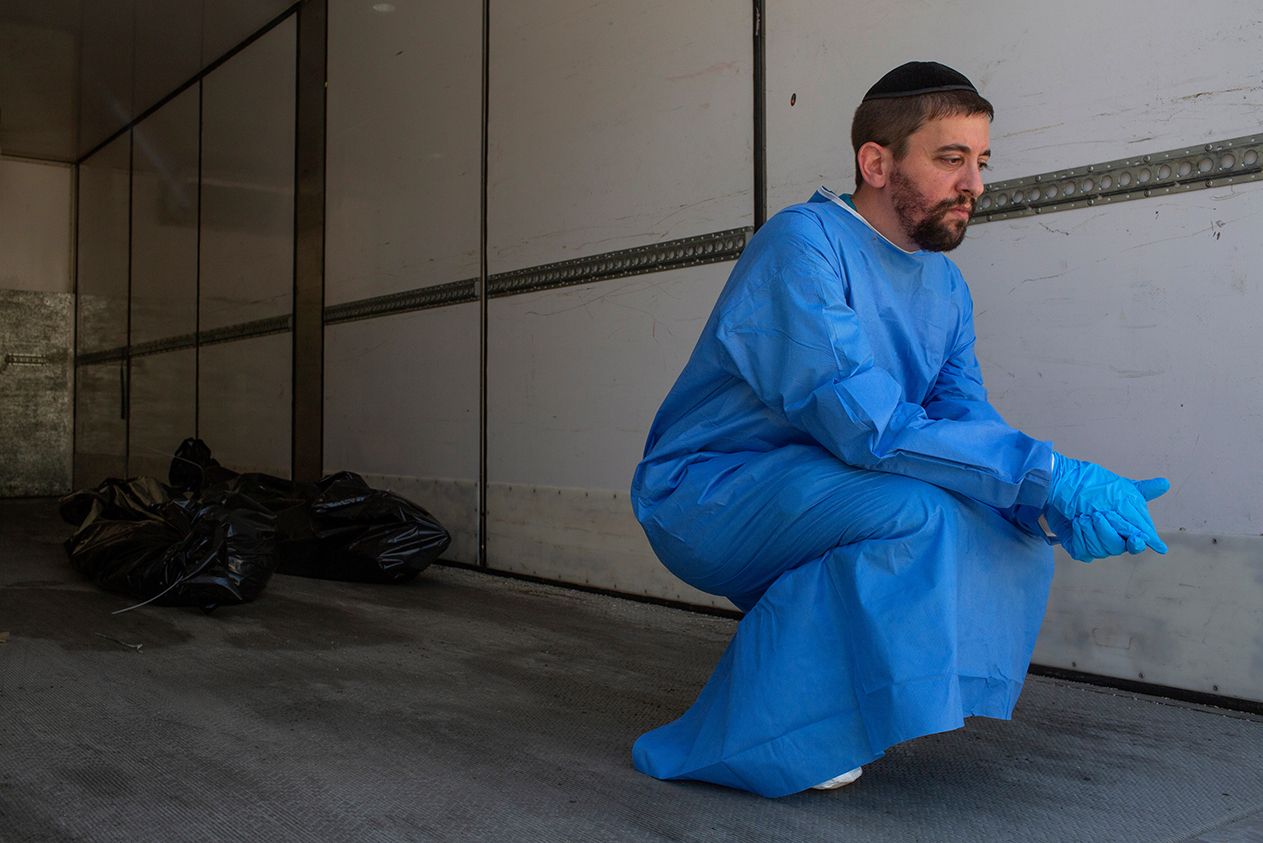
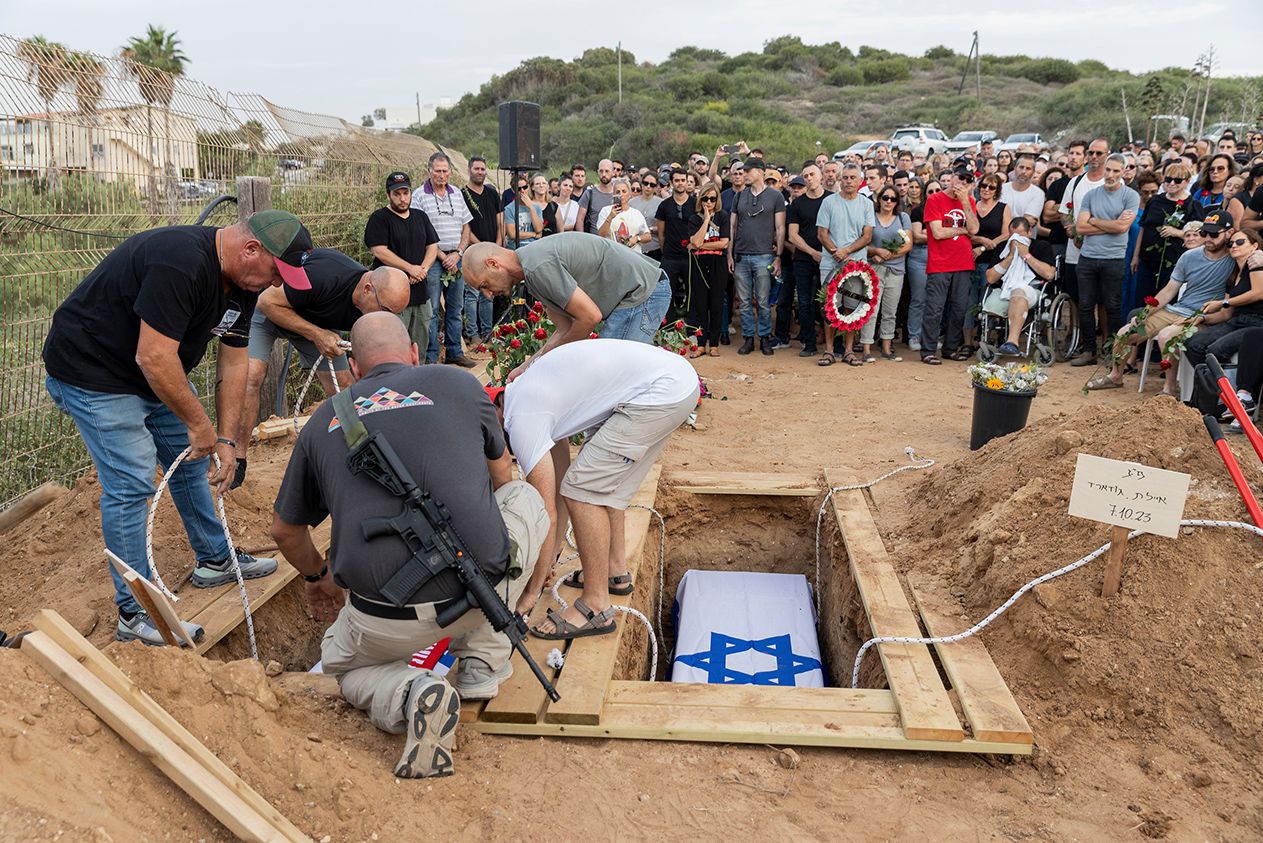
Sometimes Kugel and his colleagues receive body bags that contain the mixed ashes and bones of several bodies; sometimes parts from one body are divided between several bags. The body parts of terrorists are mixed with those of their victims. Recently, he told me, they re-identified several bodies as Israelis that were previously thought to belong to Hamas fighters, and vice versa.
And they are still finding bodies.
Ajami and six members of his team entered Meni Godard’s home. “It was horrible, burnt black, the house had been hit by many missiles,” he said. He surveyed the charred rooms heaped with piles of ash. “In ten minutes”, he told me, “I found six bodies.” On the enclosed patio he saw, in the shadows of ash, the bodies of five terrorists – identifiable, he said, because of their melted AK-47s. The living-room carpet was relatively untouched by fire. On it was a visible bloodstain, on top of which, amid the burnt detritus, he discerned the ashy outline of a man. “One of ours,” he thought.
He didn’t want Godard’s relatives to see the scene. “We are talking about teeth and bones. I found a finger. I told them, ‘I can see something – but please, don’t come in. Let me do my work.’”
He followed his usual procedure, dividing the room into a grid so bodies don’t get mixed up. Then he placed the ash, cinder and bones from each quadrant into bags. His team sieved the contents, carefully picking out the fragments of bone and placing them in plastic bags secured within plastic boxes. They took samples of blood from the carpet for DNA analysis.
A few days later, when Ajami was again at work on Be’eri, an officer from the military rabbinate told him that the body he had found on the bloody carpet had been identified as that of Meni Godard. “We were so happy,” Ajami told me. “It’s a sad thing of course, but it is good for the family.”
Meni and Ayelet Godard were laid to rest in the cemetery of Kibbutz Palmachim overlooking the Mediterranean, just south of Tel Aviv. A crowd of over a hundred mourners gathered to pay their respects. Some among them were dressed in military fatigues, rifles over their shoulders; two men, clearly survivors of the recent attacks, were in wheelchairs and covered in fresh bandages. One of them was missing a leg. On the beach below, a fisherman cast from the rocks and some people knocked a ball back and forth. The spades made a scraping sound against the dirt, the waves hushed, a helicopter clattered in the distance, and the crowd began to sing kibbutz songs softly. The peace was punctuated by a loud bang. It was hard to tell if it was the sonic boom of a jet, the report of naval artillery or the interceptors from Israel’s rocket-defence system. Not much more than 50km away, the war in Gaza continued. ■
Wendell Steavenson has reported on the Iraq war, the Egyptian revolution and war in Ukraine. You can read her previous dispatches from Israel for 1843 magazine, and the rest of our coverage, here.
PHOTOGRAPHS: Nadav Neuhaus
More from 1843 magazine

Anyone can break a Guinness World Record. I did
Consultants are designing bespoke awards to help companies build their brands
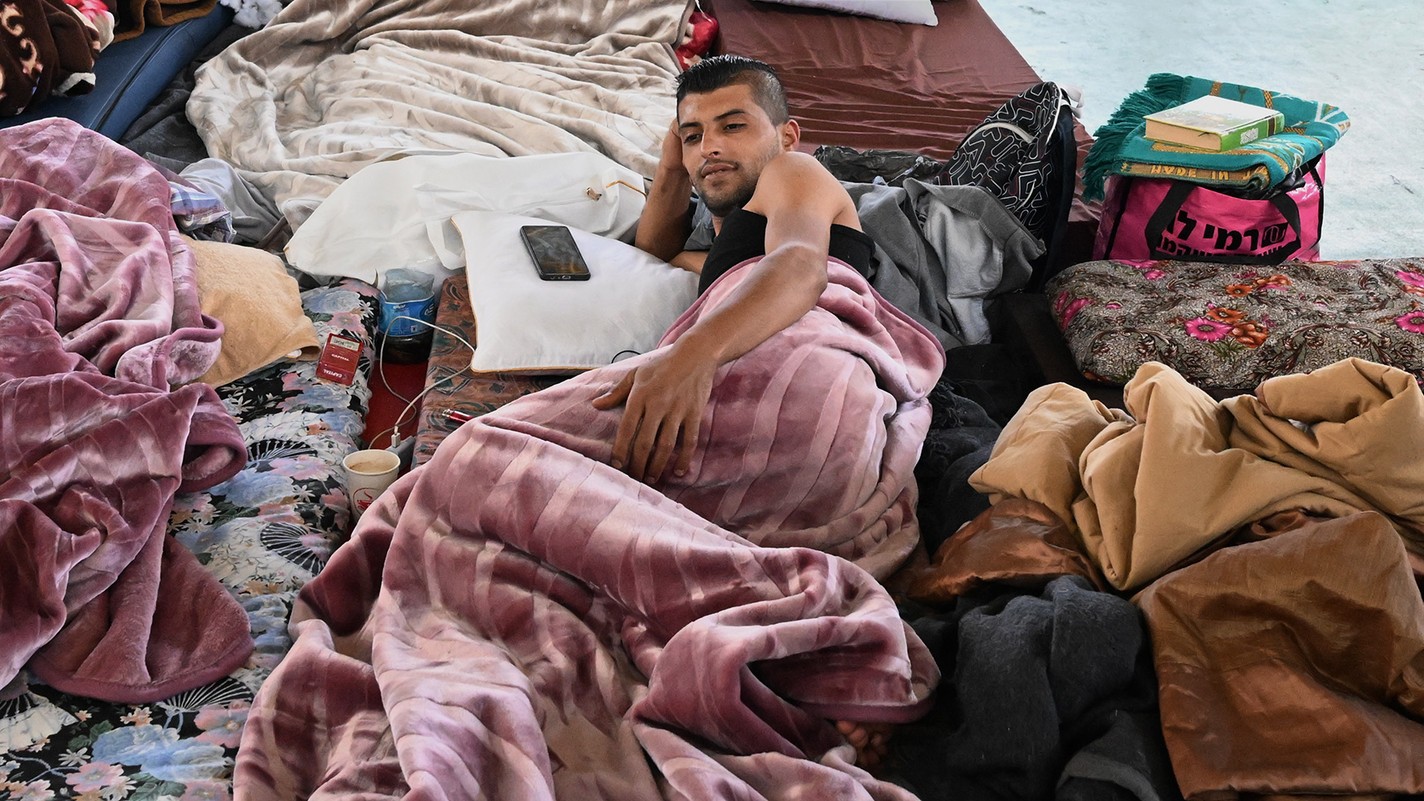
Thousands of Gazans are stranded in Israel and the West Bank
Many say they were rounded up by the police, beaten and dumped at checkpoints
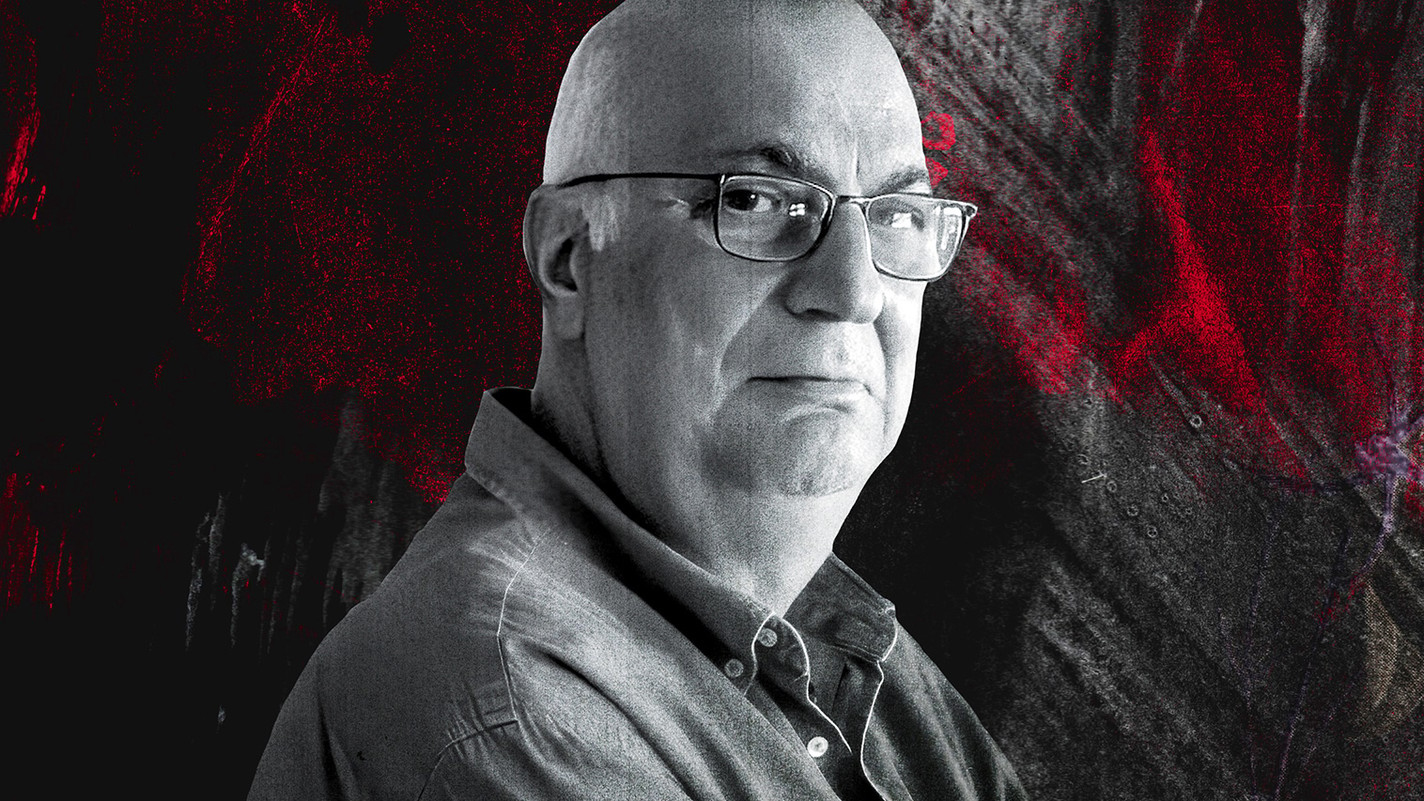
Israel’s top hostage negotiator on dealing with Hamas
In 2011 David Meidan managed to get one person out of Gaza. Now he’s trying to free 240
